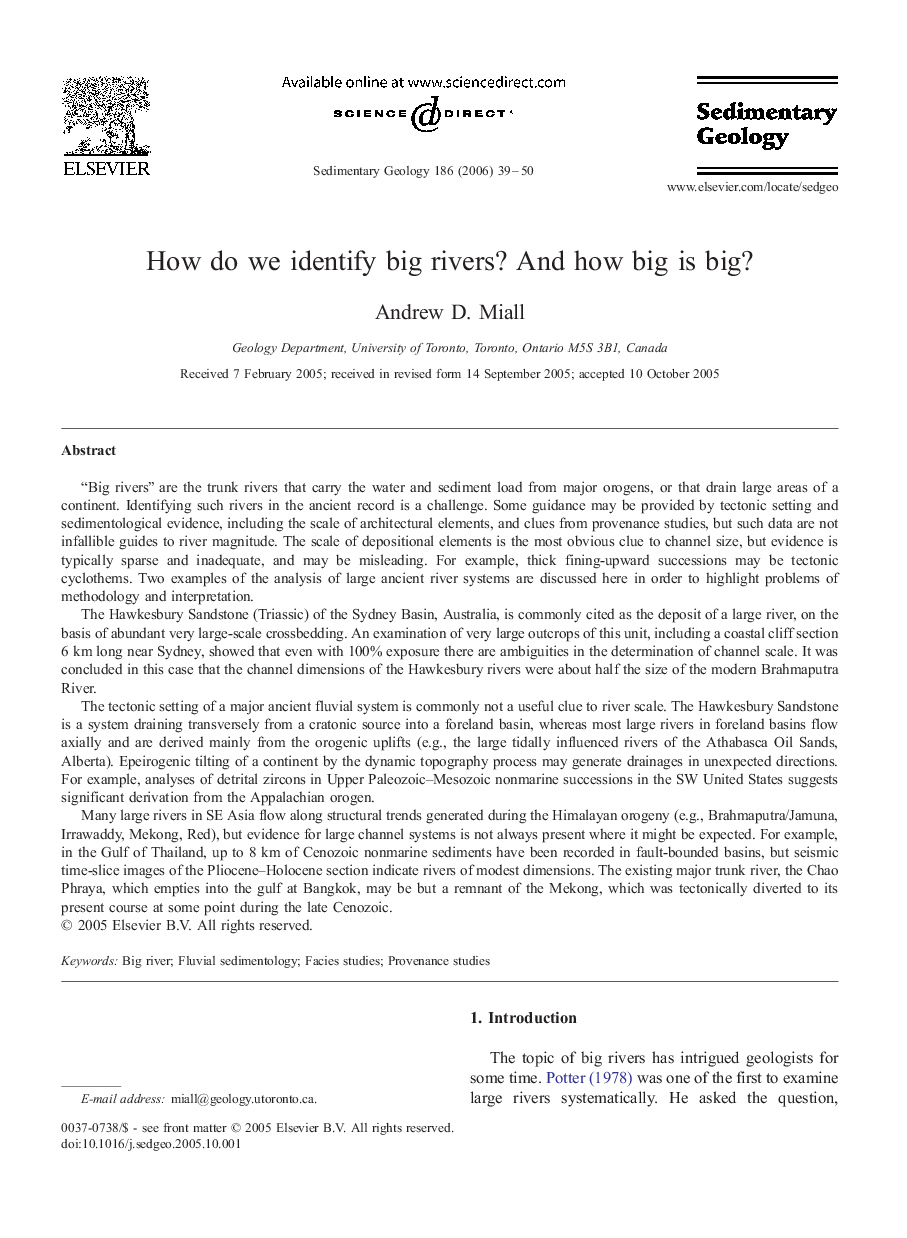| کد مقاله | کد نشریه | سال انتشار | مقاله انگلیسی | نسخه تمام متن |
|---|---|---|---|---|
| 4691036 | 1636188 | 2006 | 12 صفحه PDF | دانلود رایگان |

“Big rivers” are the trunk rivers that carry the water and sediment load from major orogens, or that drain large areas of a continent. Identifying such rivers in the ancient record is a challenge. Some guidance may be provided by tectonic setting and sedimentological evidence, including the scale of architectural elements, and clues from provenance studies, but such data are not infallible guides to river magnitude. The scale of depositional elements is the most obvious clue to channel size, but evidence is typically sparse and inadequate, and may be misleading. For example, thick fining-upward successions may be tectonic cyclothems. Two examples of the analysis of large ancient river systems are discussed here in order to highlight problems of methodology and interpretation.The Hawkesbury Sandstone (Triassic) of the Sydney Basin, Australia, is commonly cited as the deposit of a large river, on the basis of abundant very large-scale crossbedding. An examination of very large outcrops of this unit, including a coastal cliff section 6 km long near Sydney, showed that even with 100% exposure there are ambiguities in the determination of channel scale. It was concluded in this case that the channel dimensions of the Hawkesbury rivers were about half the size of the modern Brahmaputra River.The tectonic setting of a major ancient fluvial system is commonly not a useful clue to river scale. The Hawkesbury Sandstone is a system draining transversely from a cratonic source into a foreland basin, whereas most large rivers in foreland basins flow axially and are derived mainly from the orogenic uplifts (e.g., the large tidally influenced rivers of the Athabasca Oil Sands, Alberta). Epeirogenic tilting of a continent by the dynamic topography process may generate drainages in unexpected directions. For example, analyses of detrital zircons in Upper Paleozoic–Mesozoic nonmarine successions in the SW United States suggests significant derivation from the Appalachian orogen.Many large rivers in SE Asia flow along structural trends generated during the Himalayan orogeny (e.g., Brahmaputra/Jamuna, Irrawaddy, Mekong, Red), but evidence for large channel systems is not always present where it might be expected. For example, in the Gulf of Thailand, up to 8 km of Cenozoic nonmarine sediments have been recorded in fault-bounded basins, but seismic time-slice images of the Pliocene–Holocene section indicate rivers of modest dimensions. The existing major trunk river, the Chao Phraya, which empties into the gulf at Bangkok, may be but a remnant of the Mekong, which was tectonically diverted to its present course at some point during the late Cenozoic.
Journal: Sedimentary Geology - Volume 186, Issues 1–2, 15 April 2006, Pages 39–50